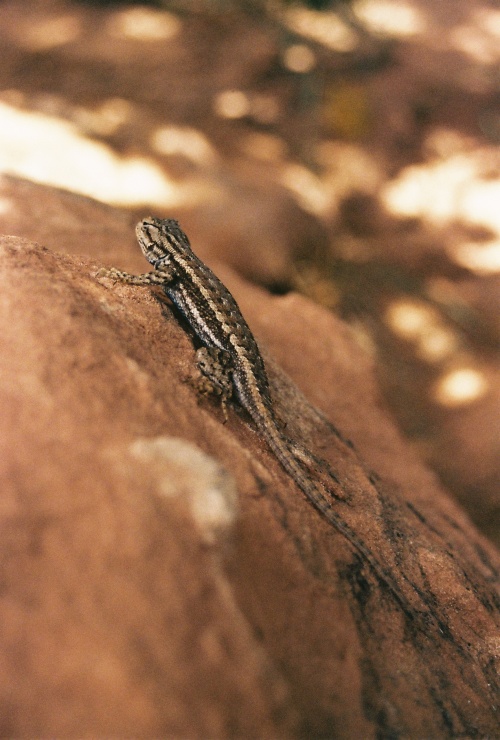







Elements: Fire, Air, Earth, Metal, Water, & Wood, Kiowa, the D. H. Lawrence Ranch near Taos, New Mexico, February 2007, all photos © 2007-2008 by QuoinMonkey. All rights reserved.
I have lived most of my life near major rivers: the Savannah, the Susquehanna, the Clark Fork, Bitterroot, and Blackfoot rivers that run through the deep mountain valley of Missoula, Montana. But for the last 24 years, home has been near the Mississippi in a Midwest state that boasts the river’s birthplace – Lake Itasca, Minnesota.
Liz and I explored Itasca State Park a few years ago and stood at the source, the Mississippi Headwaters, on root clusters of some of the oldest Red and White Pines in this country. Closer to my Southern roots, I recently started reading Mark Twain’s Life on the Mississippi, part of The Family Twain published in 1935, an original volume bought at a garage sale last summer.
If you follow the river’s flow, you will gain a whole new respect for Samuel Langhorne Clemens (Mark Twain) who published more than 30 books, hundreds of short stories and essays, and gave lectures while touring the world. That’s part of the reason my ears perked up at a recent NPR piece, Finding Finn, when I heard writer Jon Clinch plea for financial support to help preserve the financially-strapped Mark Twain Home in Hartford, Connecticut.
Clinch, author of Finn, and a host of other writers gathered at the home in September and read from some of their favorite Twain books to show their support. The list of authors included such heavy hitters as Tom Perrotta (The Abstinence Teacher), David Gates (Jernigan), Arthur Phillips (Angelica), Tasha Alexander (Elizabeth: The Golden Age), Philip Beard (Dear Zoe), Kristy Kiernan (Matters of Faith), Robert Hicks (The Widow of the South), and Amy Mackinnon (Tethered).
Maybe you’re thinking, what’s this got to do with me?
Everything. Maybe for you, it’s not Mark Twain. But have you ever seen Georgia O’Keeffe’s paintings, then longed to visit Abiquiú or the Pedernal near Ghost Ranch, New Mexico? It throws a whole other perspective on a lifetime of painted desert. What about Hemingway’s early days in Kansas City, Missouri. Or Flannery O’Connor’s childhood home in Savannah, Georgia.

Maybe for you, it’s visiting the home architect Frank Lloyd Wright built, Fallingwater near Mill Run, Pennsylvania, or a few nights in the Willa Cather room at the Mabel Dodge Luhan House (did you know ybonesy’s dad worked there one summer as a teenager?) in Taos, New Mexico. We had one red Ravine Guest who dreamed about the home of Frida Kahlo. It was such a powerful experience, she felt compelled to travel to Mexico and see it for herself.
Why? Because Place matters. Ground where writers, painters, architects, artists and visionaries lived, worked, and died matters. The places we call Home shape who we are, who we want to be, who we will become. North, South, East, or West, the geography of land, water, and sky influences our work, filters into our vision, helps us hone our craft, whether we are aware of it or not. And the preservation of these places is paramount to our own development as writers and artists.




While researching On Providence, Old Journals and Thoreau, I stumbled on the Walden Woods Project which was founded in 1990 by recording artist Don Henley. At the time, 60% of Walden Woods – a 2,680 acre ecosystem surrounding Thoreau’s Walden Pond – was protected from development. But two large tracts of land were endangered when developers sought to construct an expansive office and condominium complex in the mid-1980s. The National Trust for Historic Preservation twice listed Walden Woods as one of America’s Eleven Most Endangered Historic Places.
But the story has a happy ending. The Walden Woods Project embarked on a national campaign to raise public awareness and the funds necessary to purchase and preserve the endangered areas. In January 1991, the Project bought the 25-acre tract that had been slated for the development; a few years later, the second tract of land was acquired. Since then, they’ve protected 150 acres in and around Walden Woods and provided quality programming for hundreds of researchers and more than 200 high school teachers and students.

I’ve walked around Walden Pond, stood in the doorway to Thoreau’s cabin. I’ve been to Hibbing, Minnesota, in the living room of Bob Dylan’s childhood home. And a few years ago, ybonesy and I took a day trip to Kiowa, the D. H. Lawrence Ranch outside of Taos, New Mexico. The place was given to Lawrence and Frieda by Mabel Dodge Luhan. Dorothy Brett lived there for a time using Aldous Huxley’s typewriter to type Lawrence’s manuscripts.
Georgia O’Keeffe sat under the giant pine outside the Lawrence cabin and immortalized it in paint forever. Would you rather read about the Lawrence Tree? Or touch its barky skin, slide your feet through the pine needle beds beneath it, stare upside down at the New Mexico stars and sky.
To be able to go back to the place a writer or artist worked and lived is an inspiration. The authors calling attention to Mark Twain’s home in Hartford are sounding the alarm. Not everyone has the resources to donate money, but we can all work to raise awareness by spreading the word. Or visit the homes of writers and artists in the areas where we live and travel.
Those who blazed the trail before us are our mentors. For Jon Clinch, it’s Mark Twain. He’s willing to donate time, money, and energy to save Twain’s home and preserve the literary legacy of place. Who is it for you?



The Mark Twain House & Museum
351 Farmington Avenue
Hartford, CT 06105
860-247-0998
Other links to explore:
-posted on red Ravine, Friday, October 24th, 2008
Read Full Post »




















































































